Nova Caradia

|
This article refers to a micronation which is defunct and no longer exists. You can help make the article reflect that or ask on the talk page for further information.: |
| The Republic of Nova Caradia | |||
| |||
| Motto: "Să se Rupă Aceste Lanțuri" "Let These Chains be Broken" | |||
| Anthem: "Zorii unei Noi Libertăți" "Dawn of a New Freedom" | |||
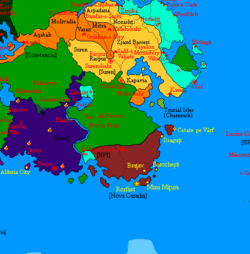
| |||
| Map versions | 17.1.2 - Present | ||
| Capital | Rorfast | ||
| Largest city | Rorfast | ||
| Official language(s) | Sarnechi | ||
| Official religion(s) | BRFN | ||
| Demonym | Caradian, Nova Caradian | ||
| - Adjective | Caradian, Nova Caradian | ||
| Government | Semi-Presidential Republic | ||
| - President | Pândi Procescu | ||
| - Prime Minister | Milana Împotriva | ||
| - Legislature | Casa Legii | ||
| Establishment | 1690 AN | ||
| Area | |||
| Population | 722,513 | ||
| Currency | Cupru (Ͼ) | ||
| Calendar | |||
| Time zone(s) | |||
| Mains electricity | |||
| Driving side | left | ||
| Track gauge | |||
| National website | |||
| National forum | |||
| National animal | Snow Mastiff | ||
| National food | Necessity Bread | ||
| National drink | Cer Mort | ||
| National tree | |||
| Abbreviation | NVC | ||
The Republic of Nova Caradia, more commonly known as Nova Caradia, is a republic located on the southeastern coast of Eura and a series of nearby islands informally known to Nova Caradians as the "Isles of Hope" (Sarnechi: Insule are Speranței). Formed as the successor state to the Duchy of Caradia after its collapse in a civil war, Nova Caradia is built on a foundation of rejection of policies that ensured the downfall of its predecessor, such as its extreme nationalism, totalitarian government, and intrinsic ties between religion and government. However, because the majority of its citizenry is formed of the fractured remains of the Caradian population, who had been previously conditioned by the monarchical regime to worship the state and its leader and denounce everything foreign as evil, its politics are heavily polarised between those who cannot let go of their past, and those who wish to change as much as possible in an attempt to stay stable and relevant in the international world.
History
Prehistory and Formation
The official beginning of the Nova Caradian Republic was in early 1690, when the first government was formed in the halls of the Rosemary Court in the capital city of Rorfast following the democratic elections of the President and representatives of the Casa Legii. However, the trappings of the republic began around 1688 when refugees of the Caradian Civil War first established a settlement on the largest of the Isles of Hope in Eura. This settlement would eventually become the city of Mina Mițura, but at the time of its formation it was little more than a refugee camp, without any form of government or permanent structures, with the little authority that existed being vested with the few Flemic priests who had survived the violent dissolution of the Duchy and successfully fled with the rest of the citizenry. For months, the camp was near total anarchy without a viable source of food (as most of the settlers were Sarnechi, unused to and ignorant of manual labour) and with the militaristic conditioning of the Caradian people causing semi-tribalistic divisions to appear among the refugees, the settlement was near to dissolving into yet another of the roaming warbands of The Green.
Thankfully for the settlers, however, news reached them that it was believed King-Saint Godrîc XI, who was previously thought to have been killed during the war, was alive and in Eura. In fact, Godrîc was in the rapidly collapsing Porto Vormouna, about to flee the city’s destruction on his flagship, a Flacără Class Cruiser. The settlement at the Isles of Hope quickly organised a missive to be sent requesting Godrîc come to rule them at the isles. Godrîc did eventually arrive at the isles, however it was not as glorious an arrival as was hoped. The settlers had ordered the construction of a palace for the king and his family, and the building, which would eventually become Palatul de Iederă, was livable at the time of Godrîc’s arrival on the isles, and he disappeared into the building for several days. None of the royal aides had reappeared, and the construction of the building was halted temporarily as the settlers waited for Godrîc to address the people, and thus it was not known what was happening inside the palace. Eventually, Godrîc reappeared and made a long speech, where he detailed a new plan for the Caradian people: to reject the principles of the Duchy that had caused its collapse nearly immediately after it declared itself a nation to the international community. He explained personal guilt for the nation’s upheaval, and outlined a plan to create a constitution and form a democratic society without a monarchy, with a modern, planned city as its capital.
Godrîc, who had also renamed and re-titled himself as King Nicolae as part of his program of rejecting the authoritative and oppressive past, quickly organised a vote among the citizens of the settlement to elect a constitutional council to assist him in writing a constitution for the new nation. The council, which was headed by Iohan Pândi Procescu, also served as an interim government, with the only two orders it issued during its tenure being the order of the construction of a new capital in Rorfast, and the search for and integration of any Caradian refugees on the surrounding islands and coast, the latter of which led to the incorporation of the settlements of Barochești and Brațav.
The final draft of the constitution was written and officially adopted by the republic in late 1689. Campaigning for governmental positions immediately began, with new political parties being hastily-organised with the intent of creating a more organised government, though independent candidates made up a sizable portion of the candidates. The election resulted in centrist Pândi Procescu, who had headed the constitutional council as well, becoming the first President of the republic. The election marked the official formation of the republic, and also moved the capital and governmental centre from Mina Mițura to Rorfast, with the new authorities giving their oaths of office in the newly-finished Rosemary Court.
War of Establishment
Following its official formation, the nascent republic was extremely unstable politically. King Nicolae I remained isolated in his palace, and political thought mainly revolved around extremes, with a conservative alliance forming in the government led by the originally very conservate Partid Conservator Național. Concerns rising from political extremism, observed most evidently by the Partid Regalist and, to a lesser extent, the Black Flame Alliance, both members of the conservative coalition in government, put Nova Caradia in a precarious position on the continent.
However, this coalition which had formed quickly dissolved almost as quickly, though it formally still existed, as the Partid Conservator became more and more moderate, cooperating often especially with the Unită Caradia party, the party of the nation’s first president, Pândi Procescu. At the same time, it became increasingly apparent that while Nova Caradian citizens possessed the skills and willpower necessary to resurrect a healthy industrial economy, the process must be taken one step at a time.
To this end, Prime Minister Milana Împotriva enacted a plan originally named the “Step-by-Step Plan”, but later renamed to the Genesis Initiative, which would attempt over the next few years to build up a sizable “base” on which to build a modern economy. The plan, according to the Minister of Finance, was to fund the necessities to allow them to get up to speed, these being defence (funding the NCDF), power (funding construction of solar and wind farms and the Apă Electrică plant), and food (giving subsidies to farms and passing the Golden Green Act). These were to be accompanied by focused industrial buildup of major urban areas.
This plan was put into action, and appeared to be working well until attacks by stateless peoples in the Green rapidly increased as new farms were founded outside of the jurisdiction of the republic’s claimed borders. These attacks were at first ignored in favour of political battles stemming from combative remarks from the Partid Regalist in district Senate. However, more attention was payed to the border when a serious attack was reported against a border patrol. To this end, the command of the NCDF enacted Operation Green Hammer, which had the expressed intent of securing lands on which Nova Caradian farmers resided under the Golden Green Act.
The plan went on for months with major success against the stateless raiders, who mainly failed in their lack of organisation and sophisticated weaponry, and eventually incorporated Strigăt Island into the nation as a semi-autonomous territory. However, military action by the nation so far north of its original landing site two years after its original landing provoked some ire from certain nations indigenous to the continent, and was raised as a point of concern in the concurrent Fontainebleau Accords.
Perception by foreign nations quickly became a hotly debated topic in the Casa Legii, with the majority of representatives favouring at the very least a policy of moderate appeasement. However, more radical representatives continued to taint the nation’s reputation until an altercation took place in the Ufini district Senat resulted in the arrest of several Partid Regalist Senatori and the expulsion of the Partid Regalist from the ruling coalition, resulting in a new government coalition forming between the liberal, centrist, and conservative parties with a policy of “nation first, politics second”. This resulted in a far more stable political climate receiving the new territories admitted after the victory of the NCDF over the stateless attackers at Iunie. Following Casa Legii elections in the new territories, the coalition government held a large majority in both houses of the Casa Legii.
The end of the operation also resulted in the repeal of the Golden Green Act, as all the land that had been settled by the act was perceived to be less of a controversial issue if it was directly claimed by the republic. To ensure a similar event would not occur in the future, the end of the operation also saw more investment in the republic’s border defence, including the construction of a series of military camps along the border to serve as training camps for new NCDF recruits and as a defensive line to prevent future incursion by stateless militants.
Politics
Government
The federal government of Nova Caradia is established in the nation’s constitution to be split into different branches of government. The executive government is composed only of the President and technically the Monarch, though in practice the monarch has vastly diminished power compared to the old Duchy, being comparable to figurehead monarchies in other nations. The legislative government is composed of the House of Law (Sarnechi: Casa Legii), a bicameral legislature divided into the Ședință and the Senat, with both houses being presided over by a Prime Minister nominated from the representatives in the Ședință. The judicial government is comprised only of the Supreme Court, which is composed of a total of nine judiciaries; four appointed by the President, four appointed by the Prime Minister, and one Supreme Judiciary elected by the Nova Caradian people. The President, Casa Legii representatives, and the Supreme Judiciary are all elected democratically through a popular vote by the Nova Caradian public once every four years, while the Prime Minister and their cabinet is nominated by the President and voted into office by the Ședință for four years.
In the early days of this government it faced some pushback from the Nova Caradian people, who had been up to this point used to the totalitarian monarchical regime of the Duchy. Riots broke out across the nation’s new capital of Rorfast mere months before it entered the phase in its construction where it would be livable after King Nicolae announced his desires to resign as monarch of Caradia and leave the future of the reborn nation to the people. The rioters stormed civil offices in the city, damaging property and planting signs and flags demanding Nicolae return as monarch. After only a few weeks of these riots, Nicolae capitulated and promised to ensure his place in the new government, and, when the first government was formed in the Rosemary Court, the first act of the Senat was to amend the Constitution to afford Nicolae a position as figurehead monarch. As such, while Nova Caradian law technically requires the monarch’s affirmation of laws and presidential orders, whatever section of the government is requesting the monarch’s affirmation has the constitutional ability to compel the monarch’s agreement through "Royal Advice".
Foreign Relations
Nova Caradia's foreign policy is handled by the President and the Ministry of the Exterior, though in practice the Ministry has vastly more control in this area than the President, with the President's responsibility being mainly the appointment of ambassadors for the nation and personally representing the nation in international organisations (of which the republic is not currently a member). The majority of tasks are overseen by the Minister of the Exterior, a position appointed by the Prime Minister of the republic. The nation has a focus on its own safety and the protection of its sovereignty, a topic very important to a small nation with limited means of resistance against the superpowers of the world, and also has a policy of promoting its ideals, that is, the ideals antithetical to those expressed by the former Duchy of Caradia, such as democracy, human rights, and freedom of navigation. It also has an opposition to overpowering military blocs, especially the centralised military of the Raspur Pact, that pose an existential threat to the sovereignty of non-member nations.
Military
The armed forces of the republic are necessarily small, due to the nation's small size and the only existing supplies for the production of new military equipment and money for military training existing in the cargo that was able to be salvaged from the dissolved Duchy of Caradia before its destruction. That being said, Nova Caradia is no longer a "militant" nation, though it does recognise the necessity of an effective fighting force, and thus upon its creation organised the Defence Force of the Republic to perform limited military tasks in its territory and the Green just beyond.
At present, the Defence Force is the only existing branch of the armed forces. The naval arm of the force is stationed in Rorfast, while the land and formally the air forces are headquartered in Brațav; however, while the headquarters of the air forces is in Brațav, the equipment is housed in Mina Mițura, which is the only city in the republic with the room for an airport large enough to house the fighters and handful of airships owned by the air arm of the Defence Force.
As part of the Inițiativa Geneza, the Nova Caradian government invested in updated military equipment, though it did not yet release the restrictions on joining the service. The update included the purchase of standardised personal equipment for infantry, armoured vehicles, and two new corvettes from private companies based in Rorfast. The plan emphasised in this area the necessary effectiveness of the land forces, as they would be needed in the plan’s intention to expand farming outside of the republic’s borders into the Green of southern Eura. The intention was that upgraded equipment would allow the defence force to more effectively counteract raids on the farms from residents of the Green.
Economy

In its early days, Nova Caradia's economy was defined by its reliance on the abundance of farmland suitable for grains-farming in its mainland territory. Due to a shortage in food and other raw materials, the government during this time encouraged rural Nova Caradian people to take up farming to supply the republic with much needed food. Because of this initiative, and the stock of industrial materials like steel and oil salvaged from old Caradian weapons and vehicles prior to the country's formation allowing for the republic to slowly start an industrial sector that began with the production of farming implements, the republic quickly began to develop a surplus of grain that allowed for less overall farmers and more industrial workers. Farming remained highly important to the internal economy, however.
The first private companies that began in the republic were construction companies that capitalised on the ongoing construction of the capital of Rorfast, and the expansion of the city of Brațav in an effort to establish its presence on the sea. These companies originally engaged in wage slavery of their employees, modeling their payment methods on companies in the old Duchy, but a presidential order outlawed this practice quickly to avoid the nation from falling back into old habits. Minimum wage was raised to Ƶ4/hour, considered to be just above the living wage in the republic.
In early VII.1690, President Pândi Procescu ordered the creation of a national bank in Rorfast. This would allow the republic to print new Zaikir banknotes (the currency was now a fiat system following the loss of the gold backing it). The bank subsequently announced that it would be slowly phasing out the Zaikir, as much of the currency had vanished with the Union it represented, and would be replacing it with the Nova Caradian cupru. The cupru was planned to be fully integrated by the end of 1691.
In late IX.1690, the Minister of Finance announced a plan to bring Nova Caradia’s economy up to standard by creating jobs, introducing financial plans, and funding public works projects under the name of the Inițiativa Geneza. The plan included proposals to fund infrastructure, granting subsidies, encouraging investment, and standardisation of currency through the introduction of the Nova Caradian cupru. The initiative was expected to have appreciable results beginning in early 1693.
Energy
Originally, the republic was obliged by a lack of infrastructure to subsist off of energy provided by stocks of coal and oil that had been salvaged from the disintegrating Caradian Duchy applied to generators around cities. However, as part of the Genesis Initiative, the republic began investing in power plants that are worked by renewable sources, to make up for a lack of consumable resources in the republic's stockpile. Plans were introduced to take advantage of as much of the land available as possible, with the construction of multiple solar farms in the flatlands in the Ufini district, wind turbines along the coast to make use of the frequent strong winds, and the installation of a tidal power plant near the capital of Rorfast.
Transportation
Land
Outside of cities, the road network of the republic is very poor. The only road connecting cities in the republic is a two-lane road between Rorfast and Mina Mițura, and the only other roads are a combination of small paved roads and dirt tracks that connect Brațav to the farmlands in the Ufini district. Private vehicle ownership levels are low, and most transport from farms to the city is done via busses that run routes among the farmlands.
Air
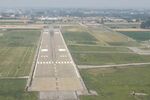
Nova Caradia, like its predecessor, focuses on travel by airship in order to reduce operating costs and reduce the risks of crashes. Mina Mițura Airfield is the largest and most used airfield in the republic, though it is not a proper airport, mainly being used as a take off and landing site for airships. The company Zboruri la Orizont engineers and constructs the majority of airships operated by Air Nova Caradia. Passenger flights are not common in the republic, but airships are the primary method of shipping cargo between cities.
Geography
Physical Geography

While Nova Caradia is a small nation, it retains a fair degree of geographical diversity, especially when comparing its mainland settlement to the islands it occupies. The islands, in particular, have a partially isolated climate and geography from mainland Eura, as the islands are covered in rolling hills with some sharp mountains. Their location on the coast provide a somewhat less arid environment than the mainland, allowing for rain to be a common occurrence and for forests to cover much of the islands. The mainland, however, is closer to the climate and environment found over the rest of southern Eura, though the coast is still less dry than the inland areas. Slight rolling hills surround the coast, with them flattening out into tropical plains divided between areas where local ponds and small creeks have allowed outcrops of temperate rainforest vegetation to thrive, and the more arid plains that comprise the vast majority of the land area.
The climate of Nova Caradia is cold, leaving parts of the plains more similar to tundra than savannah. Its position on the coast also leaves it vulnerable to more extreme weather than is typical inland, with the islands often being battered by isolated storm systems. The natural corridor created between the high hills of the islands forces cold winds blowing from the antarctic to a higher pressure, causing cold winds to often be the weather of the coast.
Districts
The republic is divided into four separate voting districts that are represented by differing number of seats in the Ședință. The following is a list of districts and their general area:
| Name | Capital | Location | Ședință Seats |
|---|---|---|---|
| Rorfast Special District | Rorfast | The city of Rorfast and the surrounding suburbs | 3/103 |
| Palat | Mina Mițura | 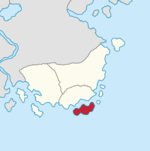 |
32/103 |
| Ufini | Brațav | 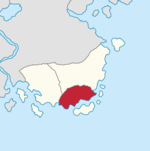 |
19/103 |
| Tadăcara | Barochești | 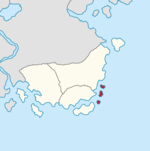 |
19/103 |
| Câmpii | Capele | 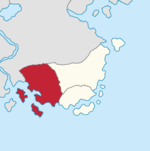 |
12/103 |
| Frate | Draguți | 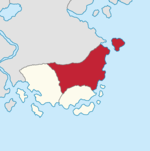 |
18/103 |
Culture
Media
Media in Nova Caradia is run entirely by private companies, with interference in the media by the government being outlawed in the constitution. News companies comprise the majority of the nation's media, with Vocea Republicii ("Voice of the Republic") being the most popular source of news in the republic. Little other media exists, with the exception of Viziune Clară Films, which has thus far been filming the birth of the republic with plans to turn the accumulated film into a documentary in early 1692.
Cuisine
Nova Caradian food has a propensity to consist largely of meats, though what kind of meat is varied, with some dishes possibly being crafted of mutton, pork, or fish depending on where it is made. At the republic's genesis, because of a general directive to "farm what you can", all different sources of food were found. Most dishes simply consist of a "grain" or a "meat", and the exact nature of these ingredients is left unspecified and are substituted by whatever is available in one's area.
Alcoholic drinks are extremely common, due in part to the expansive farmland on the republic's frontier not having reliable access to clean water when they were first settled, and thus alcohol was used to mask the taste of and cleanse some bacteria from dirty water. Though water infrastructure was expanded rapidly as it was a major matter of public concern, the commonality of alcohol remained.
National Food and Drink
The republic's national food, Necessity Bread (Sarnechi: Pâine de Necesitate), is a dish derived from the republic's early struggle for survival, in which bread was baked using many different types of grain (and also some vegetation that is not typically thought of as edible) mixed together, whatever was at hand. Despite the bread reportedly having a "pretty awful taste", it was designated as the national dish of the nation in remembrance of the early settlers' struggles.
Cer Mort ("Dead Heaven"), the nation's national drink, is a type of vodka distilled using wheat and mixed with extract from a particular plant native to the coast of southern Eura known to Nova Caradians as the "Moarte Dulce" ("Sweet Death"). The plant is a highly toxic, highly hallucinogenic reed that grows along coastlines and is known to cause vivid, typically very calming hallucinogenic sensations if ingested, though consuming any part of the plant can lead to death within thirty minutes. However, extract of part of the sap from the reed retains much of the plant's natural sweet taste and some of its hallucinogenic effect without retaining its toxin, thus allowing it to be mixed into the somewhat sweet, mildly hallucinogenic vodka. Also called "Evadare" ("Escape"), the drink is popular among the youth and among workers, often being drunk by manual labourers and farmers after the day's work is finished for its calming and euphoric effect.
Customs
The strongest social custom of Nova Caradians is the idea of the necessity of one being able to act on one's own ideas. The ability to take charge and act without provocation is seen as a positive trait amongst Nova Caradians, though this can come off as brash to outsiders. The most common application of this idea, especially in rural areas, is through citizen's desire for self-defence. Most Nova Caradian households own at least one small firearm for their protection, and small, town militias are common in areas of farmland. This is also due in part to Nova Caradians' extreme social stigma against thieves, as it is believed that thievery is one of the most pathetic crimes to commit, as it is believed that every member of the community should be able to live off of their own work, or else seek welfare assistance to get stable footing on which to launch one's own self-sufficiency. This leads to the perception that thievery is a pointless crime, and serves the benefit of no one, not even the thief.
Demographics
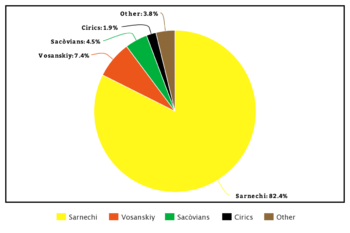
The vast majority of Nova Caradian citizens, according to the 1690 census, are of the Sarnechi ethnicity, which lends the Sarnechi language being the primary language of the nation. Officials are unsure what exactly caused Sarnechi citizens to be the most common survivors of the destruction of the Duchy, but most opinions include the generally elevated status of those of Sarnechi ethnicity in the old Duchy, and thus better access to emergency supplies that were needed to survive the event. This ethnicity includes both the Cearîm and the Scear, though it should be noted that less than 0.5% of the population of the republic are Scearick.
Of the remaining ethnicities in the republic, the Vosanski are the most prevalent, followed by Sacòvians, Cirics, and various other ethnicities.
Languages
By far the most common language in Nova Caradia is Sarnechi, which is used throughout government and civilian life, and is taught in all schools. Speakers of Sarnechi as a first language number at 87 percent of the population of the republic, with 99 percent of the population being fluent as a first or second language.
Istvanistani, as an international lingua franca, is also required to be taught in schools and government documents are required to include translations in Sarnechi and Istvanistani. Overall, 71 percent of Nova Caradians speak Istvanistani, none as a first language.
Minor languages are spoken mainly in personal settings, with Vosanskiy and Parokan being the most common, the latter from refugees from the Ciric Confederacy. Neither of these languages are seen commonly, especially as their disparate language categorisation prevents native Sarnechi speakers from learning the languages easily, and as it is believed that Vosanskiy and Ciric ethnic groups in Nova Caradia are the only speakers of these languages on Micras, though some foreign languages are quite similar to Vosanskiy.
Religion
Following the downfall of the Church of the Black Flame due to the deaths of much of the leadership of the church during the civil war, and the failure of the remaining clergy to adequately provide leadership following the settlement of the early nation before it was properly administered upon the creation of the republic, many Nova Caradian citizens expressed distrust of the traditional church body, and membership fell to astronomically low numbers.
In response, the formation of the Reformed Church of the Black Flame occurred, which quickly became the most adhered to religion in the republic, with around 85% of the population conforming to that church. The remaining population is split between adherence to the old Church of the Black Flame, irreligiousness, and some following syncretist beliefs.
Education
Twelve years of public education is provided and required by the Nova Caradian government. Funding is handled by the national government, and standards and coordination are overseen by the Ministry of Education. School maintenance, teacher salary, and other necessary payments are paid for via income taxes. Public schools teach children mathematics, literature, Sarnechi and Istvanistani, and teach history courses on the history of Caradia and Nova Caradia that are periodically inspected by representatives from the Ministry of Education to ensure historical impartiality.
Higher education at colleges is publically funded for the first four years, and paid for four to eight additional years. Most industry careers require at least two years of higher education, though for certain manual labour and specialist careers do not require college studies and at most require certificates from four years of vocational education, which falls under the umbrella of publically funded higher education.
Non-Human Citizens
The opinion of the Nova Caradian government is that any sentient being capable of living in human society without innate disruption of that society should be guaranteed the same rights as humans. To this end, discrimination against individuals on the basis of species was criminalised in the Equality of Life Act. The republic has policies in place to expedite the accepting of non-human refugees fleeing persecution in less accepting nations.
At present, the majority of the republic's non-human population consists of dragons from the failed Ciric Confederacy, though this population still remains below five hundred individuals.

